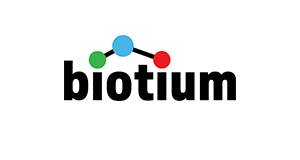Interferon gamma (IFNG)(G-23), 0.2mg/mL
Interferon gamma (IFNG)(G-23), 0.2mg/mL
SKU
BTMBNUB0219-100
Packaging Unit
100 uL
Manufacturer
Biotium
Availability:
loading...
Price is loading...
Description: This antibody recognizes a protein of 20-25 kDa, identified as human interferon gamma (IFN-γ). Multiple forms exist due to variable glycosylation and under non-denaturing conditions due to dimers and tetramers. T lymphocytes and NK cells mainly produce IFN-γ. It is a pleiotropic cytokine involved in the regulation of nearly all phases of immune and inflammatory responses, including the activation, growth and differentiation of T cell, B cells, macrophages, NK cells and other cell types such as endothelial cells and fibroblasts. It has weak anti-viral and anti-proliferative activity, and potentiates the antiviral and anti-tumor effects of IFN-γ (type I interferon).Primary antibodies are available purified, or with a selection of fluorescent CF® Dyes and other labels. CF® Dyes offer exceptional brightness and photostability. Note: Conjugates of blue fluorescent dyes like CF®405S and CF®405M are not recommended for detecting low abundance targets, because blue dyes have lower fluorescence and can give higher non-specific background than other dye colors.
Product Origin: Animal - Mus musculus (mouse), BSA from bovine serum (Bos taurus) or recombinant BSA produced in Chinese hamster ovary cells.
Conjugate: Purified, with BSA
Concentration: 0.2 mg/mL
Storage buffer: PBS, 0.05% BSA, 0.05% azide
Clone: G-23
Immunogen: Purified recombinant human IFN-gamma
Antibody Reactivity: Interferon Gamma
References: Note: References for this clone sold by other suppliers may be listed for expected applications.
Entrez Gene ID: 3458
Expected AB Applications: IHC (frozen) (published for clone)/IHC (FFPE) (published for clone)
Z-Antibody Applications: IHC, FFPE (published)/IHC, frozen (published)
Antibody Application Notes: Flow cytometry: 0.5-1 ug/million cells; Immunofluorescence: 0.5-1 ug/mL; Optimal dilution for a specific application should be determined./Higher concentration may be required for direct detection using primary antibody conjugates than for indirect detection with secondary antibody
Product Origin: Animal - Mus musculus (mouse), BSA from bovine serum (Bos taurus) or recombinant BSA produced in Chinese hamster ovary cells.
Conjugate: Purified, with BSA
Concentration: 0.2 mg/mL
Storage buffer: PBS, 0.05% BSA, 0.05% azide
Clone: G-23
Immunogen: Purified recombinant human IFN-gamma
Antibody Reactivity: Interferon Gamma
References: Note: References for this clone sold by other suppliers may be listed for expected applications.
- Eur J Dermatol (2011) 21(1): 53-7. (IHC, frozen)
- Infection Immunity (2005) 73(7): 3923-3928. (IHC, FFPE)
Entrez Gene ID: 3458
Expected AB Applications: IHC (frozen) (published for clone)/IHC (FFPE) (published for clone)
Z-Antibody Applications: IHC, FFPE (published)/IHC, frozen (published)
Antibody Application Notes: Flow cytometry: 0.5-1 ug/million cells; Immunofluorescence: 0.5-1 ug/mL; Optimal dilution for a specific application should be determined./Higher concentration may be required for direct detection using primary antibody conjugates than for indirect detection with secondary antibody
| SKU | BTMBNUB0219-100 |
|---|---|
| Manufacturer | Biotium |
| Manufacturer SKU | BNUB0219-100 |
| Package Unit | 100 uL |
| Quantity Unit | STK |
| Reactivity | Human |
| Clonality | Monoclonal |
| Application | Immunohistochemistry (frozen), Immunohistochemistry |
| Isotype | IgG1 kappa |
| Host | Mouse |
| Conjugate | Unconjugated |
| Product information (PDF) | Download |
| MSDS (PDF) | Download |

 Deutsch
Deutsch







